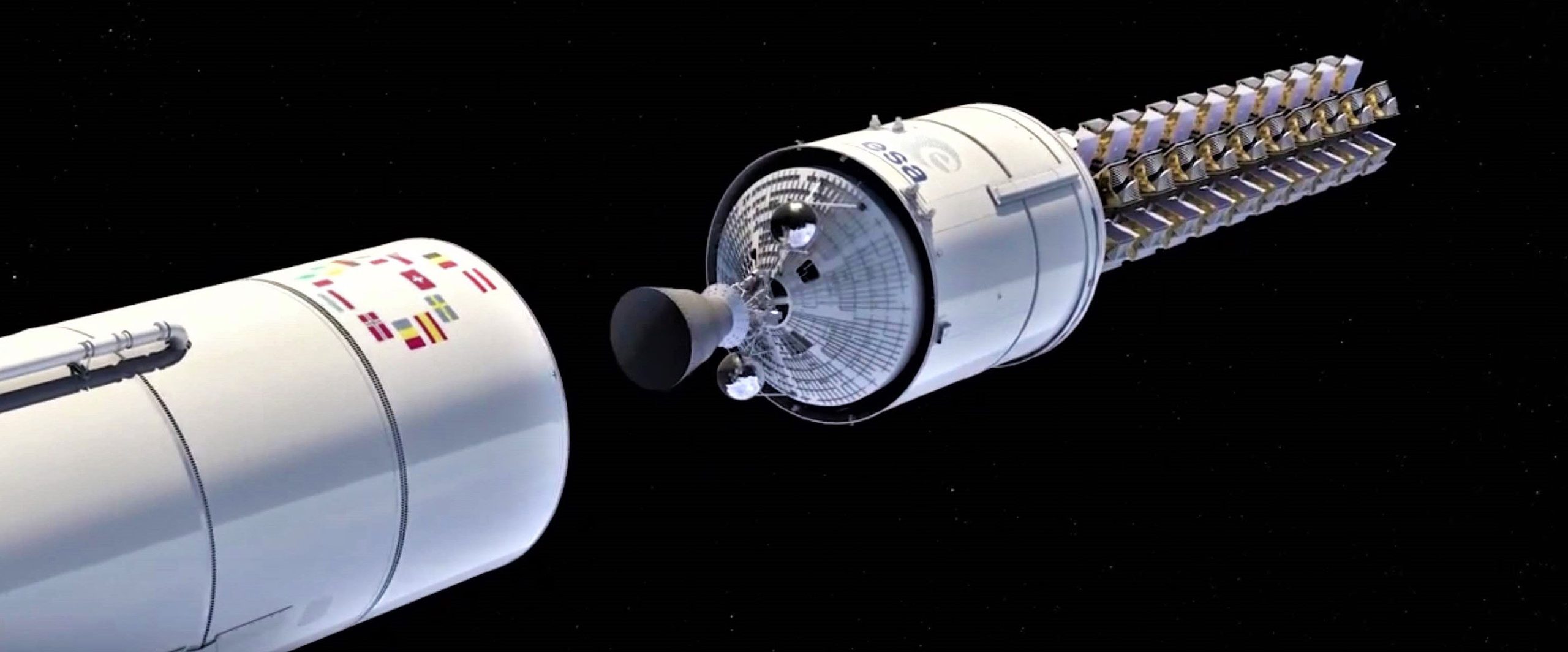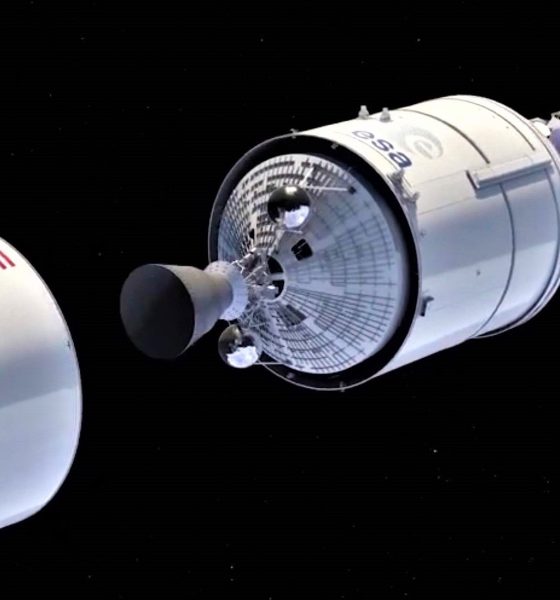

SpaceX
SpaceX’s Starlink satellite lawyers refute latest “flawed” OneWeb critique
After years of relentless legal badgering from internet satellite constellation competitor OneWeb, SpaceX’s regulatory and legal affairs team appears to have begun to (in a professional manner) lose patience with the constant barrage.
On February 21st, SpaceX published a withering refutation of 
SpaceX’s Starlink modification request
In late 2018, SpaceX filed a request with the FCC (Federal Communications Commission) that would allow the company to significantly modify parts of its Starlink satellite constellation license, cutting 16 spacecraft from the original total of 4425 and moving Phase 1’s now-1584 satellites from an operating altitude of ~1100-1300 km (680-810 mi) to just 550 km (340 mi). Aside from further reducing the latency of communications, SpaceX also argues that “the principal reason” behind lowering the operational altitude of the first ~37% of Starlink satellites was “to [further] enhance the already considerable space safety attributes of [the] constellation.”

The safety benefits of a significantly lower orbit come into play when the potential dangers of space debris come into play. Put simply, satellites in lower orbits – particularly orbits below ~1000 km – end up experiencing far more drag from the upper vestiges of the Earth’s atmosphere, drag that acts like an automatic switch in the event that a given LEO satellite loses control. At 500 km and below, even small spacecraft with enough surface area will automatically reenter Earth’s atmosphere within just a few years (~5), while orbits around 1000-1500 km can stretch the time to reentry by a factor of 5-10, often taking decades. In other words, SpaceX’s desire to lower the initial operating orbit of ~1600 Starlink satellites would end up dramatically reducing the consequences the failure of one or several satellites would have on other spacecraft operating in the same orbital regions
“Rather than base its critiques on facts in SpaceX’s application or evidence in the record, OneWeb relies entirely on a collection of flawed assumptions cobbled together into an equally-flawed fictional scenario.
Overall, OneWeb rested its interference analysis entirely on incorrect assumptions and overlooked basic operational distinctions in the actual effect of the proposed SpaceX modification.”
A step further, there is a great deal more irony to be found in
SpaceX never explicitly says as much but it becomes eminently clear that the authors behind this latest response are rapidly losing patience with OneWeb’s years of shoddy attempts at legally suppressing competition. Given that lowering the orbits of almost 40% of SpaceX’s first round of Starlink satellites would end up working in
“OneWeb is now challenging SpaceX’s plan to reduce altitude to further enhance the space safety attributes of its system. Considering OneWeb’s frequent request that SpaceX take this exact step of moving farther away from OneWeb’s proposed constellation, one is left to wonder whether OneWeb would be satisfied with SpaceX operating at any altitude whatsoever.“
SpaceX, 02/21/2019

SpaceX takes a different approach
Aside from seemingly hollow concerns about the “safety” of SpaceX’s request to lower Starlink satellite orbits, OneWeb further criticized SpaceX for what it perceived to be “operational setbacks” after launching a duo of prototype Starlink spacecraft, known as Tintin A and B. In essence, it appears that OneWeb made the bizarre decision to cite officially-unconfirmed and often-disputed reports that SpaceX’s prototypes were unable to reach their originally planned operational orbits of ~1125 km, effectively trapped at the ~515 km orbit they were dropped off in as a result of their shared launch.
“SpaceX originally expected to operate these satellites at approximately 515 km and then raise them to an altitude of 1,125 km for further testing, but chose not to do so. From this, OneWeb leaps to an unsupported conclusion that SpaceX’s experimental satellites faced “operational setbacks.” To the contrary, SpaceX made a conscious decision to remain at this optimal altitude for further experimentation.
Far from facing setbacks, the experimental program has validated SpaceX technology – including the Hall-effect thruster propulsion system and the capabilities of the communications payload. Thus, unlike OneWeb, SpaceX has successfully tested its spacecraft design in advance of initiating deployment of its commercial constellation.”
SpaceX, 02/21/2019
While there was, in fact, some plausible evidence in mid-2018 that at least tentatively suggested that the spacecraft may have had issues with their first-generation ion thruster prototypes, it soon became clear that SpaceX and several major investors were sticking to the narrative that the Tintin twins were operating in fine health in orbit. It’s possible that SpaceX’s legal team and government relations executives are trying to aggressively spin on-orbit difficulties with the prototypes into good news, and the fact that SpaceX is requesting a modification to 550 km instead of Tintin A and B’s ~520 km orbits remains more than a little odd. However, including such brazen and open-faced lies in official legal/regulatory documents would be a deathwish SpaceX’s Starlink license in its entirety, while also begging for major SpaceX-aimed lawsuits and a general black cloud forming over the company.
If the FCC ultimately chooses to permit SpaceX’s Starlink license modification, the company’s first more or less operational Starlink launch – likely carrying anywhere from 10 to 30 satellites – could occur as early as late April or early May.
Check out Teslarati’s Marketplace! We offer Tesla accessories, including for the Tesla Cybertruck and Tesla Model 3.

Elon Musk
Elon Musk’s Biggest Revelations on AI, Robots, and the Future of Work from the Moonshots Podcast

Elon Musk’s appearance on the Moonshots with Peter Diamandis podcast was packed with bold predictions, candid admissions, and surprising tech insights. The nearly three-hour conversation covered everything from artificial intelligence to humanoid robots, geopolitics, and the future of work. Here are the top 10 most intriguing takeaways:
-
Aggressive AGI Timeline Predictions
Musk offered a detailed view on when artificial general intelligence (AGI) could emerge, suggesting it may arrive sooner than many expect, emphasizing both transformative potential and risks.
-
U.S. vs. China in the AI Race
He discussed the strategic competition between the United States and China over AI development, noting that geopolitical dynamics will shape how and who leads in the next decades.
-
Future of Job Markets
Musk touched on how AI and automation could reshape employment, predicting massive boosts in productivity alongside potential disruptions in traditional work structures.
-
Clean Energy Transition
A recurring theme was the role of clean energy in future economies, with Musk reiterating the importance of scaling sustainable power generation and storage.
-
Humanoid Robots Are Coming
On the podcast, Musk elaborated on Tesla’s work on humanoid robots, hinting at timelines and applications that go beyond factories to general-purpose assistance.
-
Tesla Roadster “Last Human-Driven Car”
Outside the core discussion topics, Musk teased features of the upcoming Tesla Roadster — calling it “the best of the last of the human-driven cars” and suggesting safety won’t be its main selling point.
-
The Role of AI in Clean Energy and Robotics
Linking AI to both energy optimization and robotics, Musk explained how smarter systems could accelerate decarbonization and task automation across industries.
-
U.S. Innovation Leadership
Musk argued that maintaining American leadership in key tech sectors like AI, space, and robotics should be a national priority, with thoughtful policy and investment.
-
Job Creation vs. Job Elimination
While acknowledging automation’s disruptive effects, he also outlined scenarios where new industries and opportunities could emerge, particularly in AI, space, and advanced manufacturing.
-
Long-Term Vision for Humanity
Throughout the conversation, Musk revisited his long-term philosophical views — including a belief in humanity’s responsibility to become a multi-planetary and technologically empowered species.
Whether you agree with Musk’s optimism or not, the podcast offers a window into the thinking of one of the most influential figures in tech today, in and why his visions continue to spark debate and inspiration.
Elon Musk
Starlink achieves major milestones in 2025 progress report
Starlink wrapped up 2025 with impressive growth, adding more than 4.6 million new active customers and expanding service to 35 additional countries, territories, and markets.

Starlink wrapped up 2025 with impressive growth, adding more than 4.6 million new active customers and expanding service to 35 additional countries, territories, and markets. The company also completed deployment of its first-generation Direct to Cell constellation, launching over 650 satellites in just 18 months to enable cellular connectivity.
SpaceX highlighted Starlink’s impressive 2025 progress in an extensive report.
Key achievements from Starlink’s 2025 Progress
Starlink connected over 4.6 million new customers with high-speed internet while bringing service to 35 more regions worldwide in 2025. Starlink is now connecting 9.2 million people worldwide. The service achieved this just weeks after hitting its 8 million customer milestone.
Starlink is now available in 155 markets, including areas that are unreachable by traditional ISPs. As per SpaceX, Starlink has also provided over 21 million airline passengers and 20 million cruise passengers with reliable high-speed internet connectivity during their travels.
Starlink Direct to Cell
Starlink’s Direct to Cell constellation, more than 650 satellites strong, has already connected over 12 million people at least once, marking a breakthrough in global mobile coverage.
Starlink Direct to Cell is currently rolled out to 22 countries and 6 continents, with over 6 million monthly customers. Starlink Direct to Cell also has 27 MNO partners to date.
“This year, SpaceX completed deployment of the first generation of the Starlink Direct to Cell constellation, with more than 650 satellites launched to low-Earth orbit in just 18 months. Starlink Direct to Cell has connected more than 12 million people, and counting, at least once, providing life-saving connectivity when people need it most,” SpaceX wrote.
Elon Musk
Starlink passes 9 million active customers just weeks after hitting 8 million
The milestone highlights the accelerating growth of Starlink, which has now been adding over 20,000 new users per day.

SpaceX’s Starlink satellite internet service has continued its rapid global expansion, surpassing 9 million active customers just weeks after crossing the 8 million mark.
The milestone highlights the accelerating growth of Starlink, which has now been adding over 20,000 new users per day.
9 million customers
In a post on X, SpaceX stated that Starlink now serves over 9 million active users across 155 countries, territories, and markets. The company reached 8 million customers in early November, meaning it added roughly 1 million subscribers in under seven weeks, or about 21,275 new users on average per day.
“Starlink is connecting more than 9M active customers with high-speed internet across 155 countries, territories, and many other markets,” Starlink wrote in a post on its official X account. SpaceX President Gwynne Shotwell also celebrated the milestone on X. “A huge thank you to all of our customers and congrats to the Starlink team for such an incredible product,” she wrote.
That growth rate reflects both rising demand for broadband in underserved regions and Starlink’s expanding satellite constellation, which now includes more than 9,000 low-Earth-orbit satellites designed to deliver high-speed, low-latency internet worldwide.
Starlink’s momentum
Starlink’s momentum has been building up. SpaceX reported 4.6 million Starlink customers in December 2024, followed by 7 million by August 2025, and 8 million customers in November. Independent data also suggests Starlink usage is rising sharply, with Cloudflare reporting that global web traffic from Starlink users more than doubled in 2025, as noted in an Insider report.
Starlink’s momentum is increasingly tied to SpaceX’s broader financial outlook. Elon Musk has said the satellite network is “by far” the company’s largest revenue driver, and reports suggest SpaceX may be positioning itself for an initial public offering as soon as next year, with valuations estimated as high as $1.5 trillion. Musk has also suggested in the past that Starlink could have its own IPO in the future.












